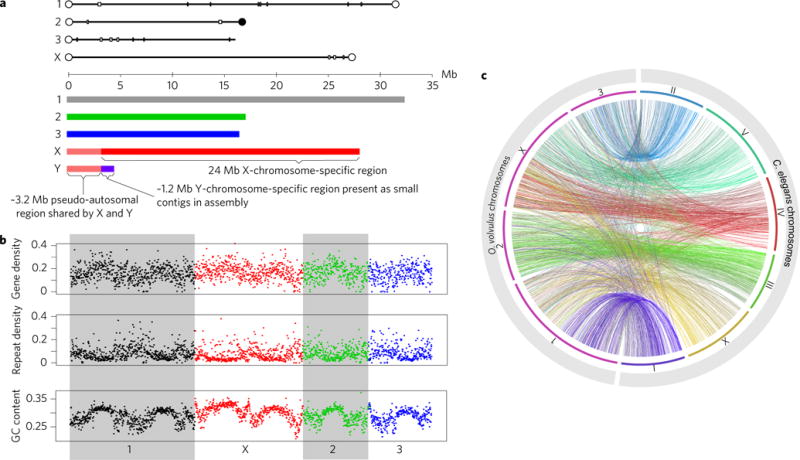Figure 1. O. volvulus chromosomes.

a, Lines above the axis show sizes of O. volvulus chromosomes in the assembly and the locations of potential telomeric repeats. Filled circles indicate telomere repeats present in the assembly, open circles are ends of optical map scaffolds (Supplementary Fig. 1c). Rectangular boxes/bars indicate sequence gaps of at least 50 kb. The inferred karyotype for O. volvulus is shown below the axis, based on the assembly and sequence coverage data. b, GC content, gene density and repeat density (proportion of bases in each window covered by genes/at least one annotated repeat) in non-overlapping 10 kb windows for each of the four large scaffolds. Colours and shading indicate scaffold boundaries. c, Comparison of four O. volvulus chromosomes with six C. elegans chromosomes. Links show PROmer hits with similarity greater than 70% over at least 100 amino acids, coloured according to chromosome location of C. elegans hit.
